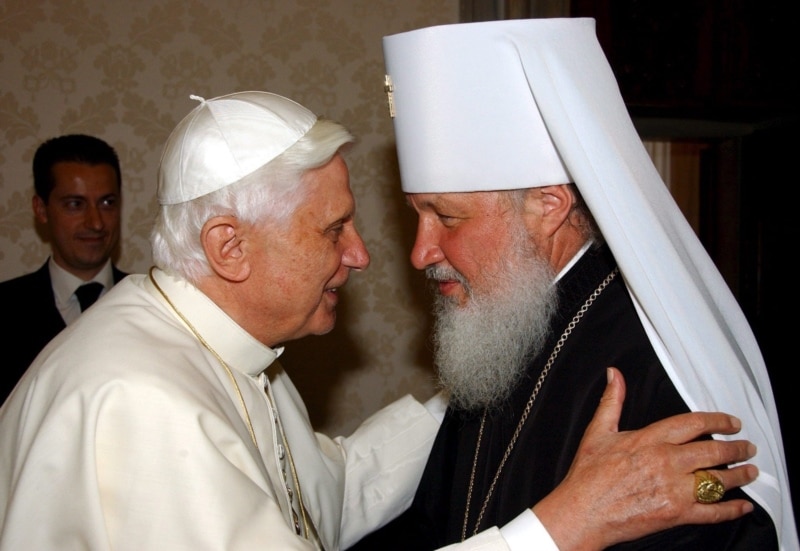In recent times the Holy Spirit has moved groups of Anglicans to petition repeatedly and insistently to be received into full Catholic communion individually as well as corporately. The Apostolic See has responded favourably to such petitions. Indeed, the successor of Peter, mandated by the Lord Jesus to guarantee the unity of the episcopate and to preside over and safeguard the universal communion of all the Churches, could not fail to make available the means necessary to bring this holy desire to realization. POPE BENEDICT XVI,
Anglicanorum Coetibus
The
ecclesia anglicana (English Church), later shortened into the word "Anglican" when referring to the members of this communion, later also came to be known as the "Anglican Church." With over 80 million members (according to
The Anglican Communion Official Website, the Anglican communion stood as the third largest Christian communion in the world, after the Roman Catholic Church and the Eastern Orthodox Church.
The faith of the Anglicans had foundations coming from the Universal Church.
History
Of the many provinces of the Anglican Communion there are four with unbroken history stretching back before the 16th century--the Church of England, the Church in Wales, the Church of Ireland, and the Scottish Episcopal Church. All can still be found in Great Britain.
When he broke with the Church of Rome in 1534, and declared himself, through the Act of Supremacy, Supreme Head of the Church of England, King Henry VIII never formally repudiated the doctrines of the Roman Catholic Church. He strongly resisted thereafter any association made of the English Church with the Continental Protestant Reformation.
Meanwhile the authority of the Church of Rome over the Catholic churches in England continued to be forbidden by Parliament. The Act of Supremacy in 1534 declared the King as "the only Supreme Head in Earth of the Church of England." And the Treason Act of 1534 made it high treason, punishable by death, to refuse ot acknowledge the King as such. Finally Pope Clement VII excommunicated Henry and the Archbishop of Canterbury Thomas Cramner.
Mary I, Henry's daughter with first wife Catherine of Aragon, became crowned Queen Regnant of England and Ireland. All through the years before she became Regnant Queen, Mary remained a faithful Roman Catholic. And on 22 July 1553, after reigning Queen of England Lady Jane Grey got deposed by popular support, Mary legally assumed the crown. Stephen Gardiner, the Bishop of Winchester, crowned her Mary Queen of England.
Her first Parliament abolished Edward's religious laws through the Statute of Repeal Act of 1553, restoring Catholic Church doctrine to its 1539 form. The reestablishment of communion with the Church of Rome became official in 1554.
When Mary died in 1558, her half-sister succeeder her as Queen Elizabeth I of England. Elizabeth I, a Protestant, then worked to break the communion of the Church of England from Rome. In the Papal bull Regnans in Excelsis Pope Pius V declared Elizabeth excommunicated on 25 February 1570.
Ordination of Women Priests
One single hurdle that made it extremely difficult for the Church of England to reunite with the Universal (Catholic) Church came in the form of the ordination of women to priesthood. The first women priests ordained in the Anglican Communion came from the Anglican Diocese of Hong Kong and Macao. They were Li Tim-Oi in 1944 and Jane Hwang and Joyce Bennett in 1971. As of 2010, four provinces (Episcopal Church in the United States and the Anglican Churches of Australia, Canada and New Zealand.) have ordained women bishops, the first being Barbara Harris in 1989 for the Episcopal Diocese of Massachusetts.
In the apostolic letter Ordinatio sacerdotalis, Pope John Paul II emphasized that "the Church has no authority whatsoever to confer priestly ordination on women and that this judgment is to be definitively held by all the Church's faithful." This teaching is embodied in the canon law (number 1024) and the Catechism of teh Catholic Church ("Only a baptized man validly receives sacred ordination.").
Return to the Fold of the Universal Church
On 4 November 2009 Pope Benedict XVI issued an apostolic constitution (Anglicanorum Coetibus) that allows groups of former Anglicans to enter into full communion with the Roman Catholic Church as members of his personal ordinariates. In this structur, former Anglicans can preserve elements of distinctive Anglican spirituality.
Standing before his flock on 14 November 2010, Anglican Bishop Keith Newton of Richborough announced his plan to go back to the fold of the Church of Rome. In a pastoral letter to priests and people in his diocese, Newton informed his flock that he will resigh as bishop effective 31 December 2010. He said that most Anglicans have prayed for union with the Catholic Church. But this union becomes less likely with the ordination of women. "Although we must still pray for sacramental and ecclesial unity between our Churches that now seems a much more distant hope," he wrote.
As of November 2010, more Anglican bishops went back to the apostolic fold. They include Right Reverend Andrew Burnham (Bishop of Ebbsfleet) and five junior bishops (retired reverends John Broadhurst, Keith Newton, Edwin Barnes and David Silk).
On 1 January 2011 three bishops--John Broadhurst, Andrew Burnham and Keith Newton--who resigned from the Church of England were received into the Catholic Church at Westminster Cathedral in London in a simple ceremony enough to welcome them back to the Mother Church. From January 1 through 14, they will live as lay Catholics, and will be ordained Catholic priests on January 15. More than 600 Anglicans are expected to follow these bishops.
CLOSER LOOKS
Members of St. John the Baptist Anglo-Catholic Parish (Sevenoaks, Kent). (
Take a closer look.)
RELATED DOCUMENTS
Apostolic Constitution,
Anglicanorum Coetibus
Sources
Mark Greaves: Anglicans prepare for a dive in the dark," Catholic Herald 1 April 2011
Steve Doughty: "Church of England 'is like failing coffee chain' says bishop," Mail Online 9 November 2010.
___: "Anglican Bishops move to Catholic Church," Rome Reports, 7 January 2011.


